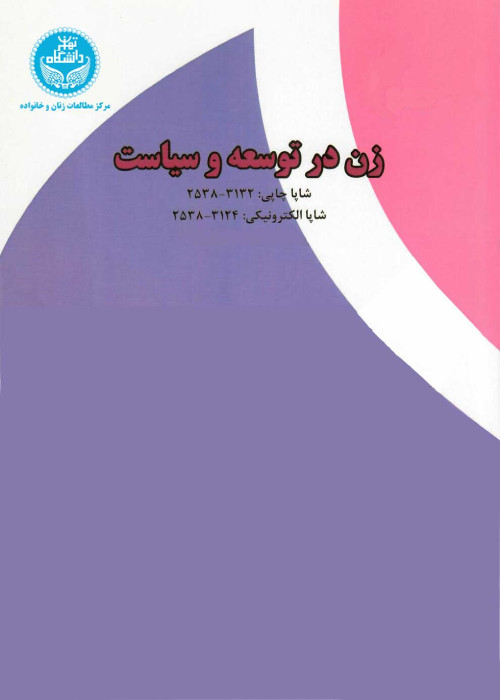Fertility Rate and Women's participation in Labor Force Case Study: Middle Eastern and North African Countries
Author(s):
Abstract:
Nowadays taking women and their role in society into consideration is unavoidable and one of the biggest developments during the past 100 years is the increase in women's participation in economic & social affairs. In this way, it is important to consider the relationship between women’s participation in labor's Market as an important and affective factor in economic growth and fertility rates as an effective factor in population growth. The extent of women's participation in different affairs is the most important factor in the economic growth and development of a country. But in many developing countries especially in Middle East and North Africa women' role in economic and social activities is rather low.Statistics reveal that women's participation in labor force in these regions during 2004 is 27/1%, however for the OECD group countries this figure is 44.2% while the world average is equal to 40%. The figures illustrate the weakness in this group of countries in contrast to other regions and world's average.On the other hand, fertility rates in this region are very high in contrast with 20 other regions.Accordingly in 2004, in North Africa, Middle East the figure was 3 while in OECD countries it was equal to 1.6 with the world average mounting to 2.6.This paper evaluates the cause and effect relationship between fertility rate and women's role in labor force for Middle East and North African countries during 2004-1980. The study aims to find out whether there’s a relationship between fertility rate and women role in labor force. And provided there’s a relationship, does an increase in participation role have a decreasing effect on the fertility rate? Or on the contrary does a decreased fertility rate affect increased participation role?Hsiao causality test is used for research analysis, which is an improved granger causality test.Research results show that during the time interval and in the case study regions, the fertility rate changes affect women's role in labor force and so fertility rate is a cause of changes in women's role in labor force.Considering the results, we can identify the changes in women's roles that affect fertility rate.Accordingly, an increase in fertility rate can lead to a decrease in women’s labor force and consequently a decrease in their participation at work.Similarly, an increase in women’s employment and participation in economic affairs will lead to a decrease in the fertility rate. Bearing in mind the importance of the role of women as active population in a society, the research suggests that the studied countries should pave the way for an increase in women’s participation in various economic and social affairs and at the same time provide health services and facilities including education for fertility and birth control.
Keywords:
Language:
Persian
Published:
Women in Development and Politics, Volume:8 Issue: 2, 2010
Pages:
55 to 68
magiran.com/p745523
دانلود و مطالعه متن این مقاله با یکی از روشهای زیر امکان پذیر است:
اشتراک شخصی
با عضویت و پرداخت آنلاین حق اشتراک یکساله به مبلغ 1,390,000ريال میتوانید 70 عنوان مطلب دانلود کنید!
اشتراک سازمانی
به کتابخانه دانشگاه یا محل کار خود پیشنهاد کنید تا اشتراک سازمانی این پایگاه را برای دسترسی نامحدود همه کاربران به متن مطالب تهیه نمایند!
توجه!
- حق عضویت دریافتی صرف حمایت از نشریات عضو و نگهداری، تکمیل و توسعه مگیران میشود.
- پرداخت حق اشتراک و دانلود مقالات اجازه بازنشر آن در سایر رسانههای چاپی و دیجیتال را به کاربر نمیدهد.
In order to view content subscription is required
Personal subscription
Subscribe magiran.com for 70 € euros via PayPal and download 70 articles during a year.
Organization subscription
Please contact us to subscribe your university or library for unlimited access!



